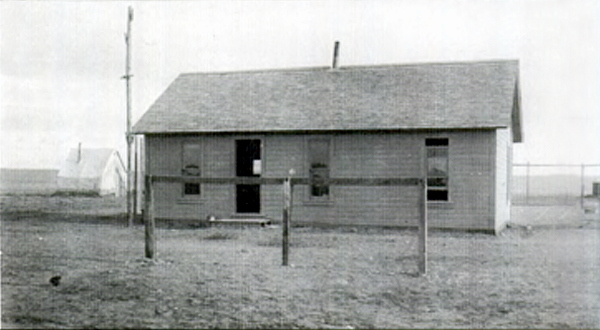
Headquarters Building, United States Bureau of Reclamation, Camp Colter, Wyoming, 1907.
As depicted on the next page, the building was replaced several years later by a larger two-story building.
To a great extent the modern town of Powell, Wyoming, owes its founding and existence to the advent
of Irrigation and the Shoshone Project, the latter discussed with regard to Cody. The Bureau of Reclamation
selected a site on the Garland Flats for its headquarters. At first it was proposed to call the new townsite just north of the Shonshone
River "Colter" after the early mountain man and veteran of the Corps of Discovery,
but it was discovered that the name had already been applied to a railroad
siding in Washakie County south of Worland. So it came to be that the townsite was named after
John Wesley Powell whose foresight brought about large scale irrigations projects.
In Powell, Colter is, however, honored in the name of Colter Ave., US 14A, paralleling the
Garland Canal which brought water to the area.
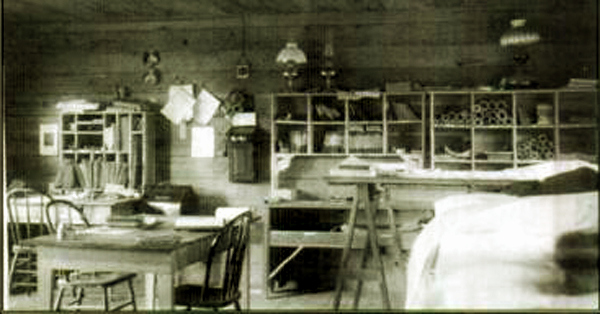
Interior Headquarters Building, 1907.
Note: Kerosine lamps and hand-cranked telephone.
As indicated in the next image, prior to irrigation, the Garland Flats were unsuitable for agriculture, being somewhat arid
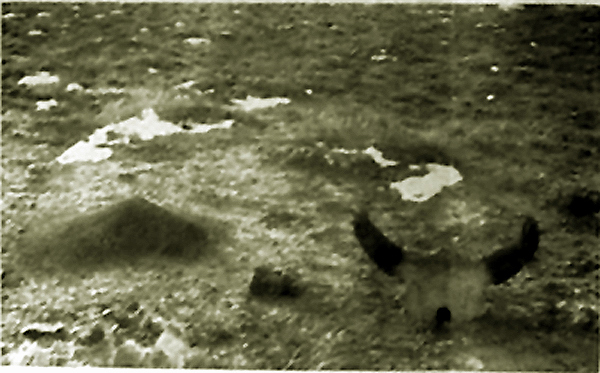
Garland Flats, 1906.
Compare with the next two images image taken in 1910 and 1911.
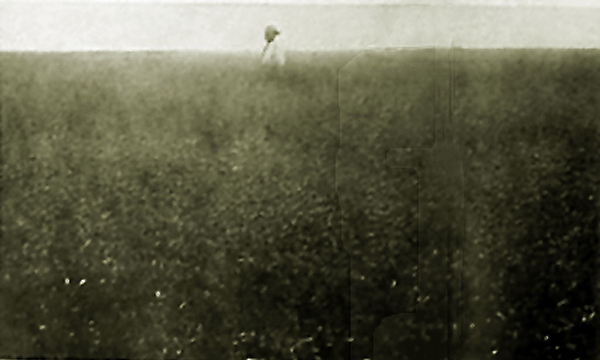
Garland Flats, 1910.
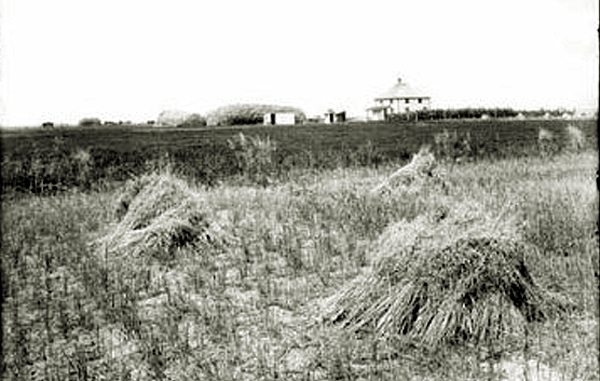
Garland Flats, 1911.
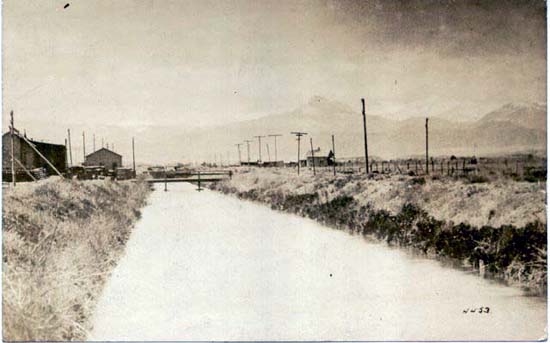
Irrigation canal near Powell, undated.
In the background is Heart Mountain, the site during the 1930's of a Civilian Conservation Corps
camp and during World War II of the Heart Mountain War Relocation Camp, discussed
on a subsequent page. During the war
some 11,000 persons of Japanese ancestry were relocated from the West Coast and housed in the
camp. It has been estimated that as many as 75% of those incarcerated in the camp were born in the
United States and were, thus, American citizens.
Some dispute exists as to the origins of the name Heart Mountain. Some contend that it is an
English translation of an Indian name. Others contend that the name was a mispelling by
John Colter of the
name of an early trapper or military officer named Hart.
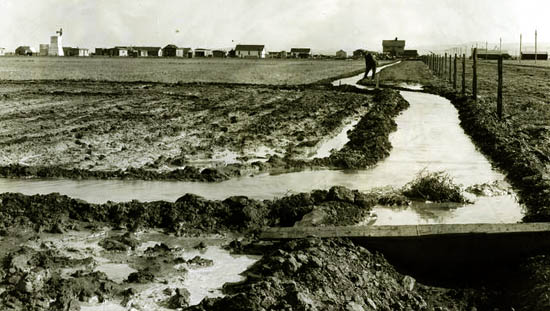
Town of Powell and Irrigation, approx 1909. Reclamation Service Photo.
As perhap suggested above, Powell was made possible by irrigation. , in 1902 President Roosevelt signed the
Reclamation Act which provided for governmental financing of large scale irrigation projects. Roosevelt in his
1913 An Autobiography explained the purpose of the Act:
On June 17, 1902, the Reclamation Act was passed. It set aside the proceeds
of the disposal of public lands for the purpose of reclaiming the waste
areas of the arid West by irrigating lands otherwise worthless, and thus
creating new homes upon the land. The money so appropriated was to be
repaid to the Government by the settlers, and to be used again as a
revolving fund continuously available for the work.
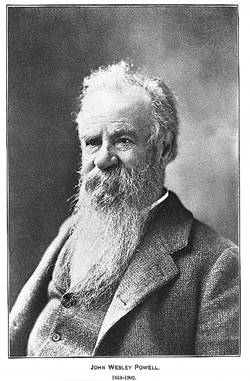 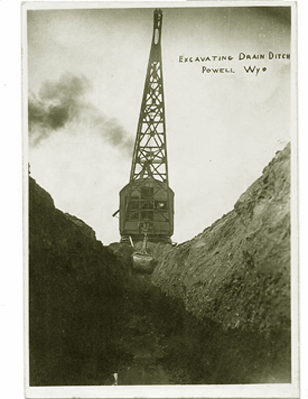
Left, John Wesley Powell,
photo courtesy of the Library of Congress
Right, Excavation steam shovel near Powell, approx. 1915
Roosevelt observed that the first to propose such irrigation in the West was
John Wesley Powell:
While I had lived in the West I had come to realize the vital need of
irrigation to the country, and I had been both amused and irritated by the
attitude of Eastern men who obtained from Congress grants of National money
to develop harbors and yet fought the use of the Nation's power to develop
the irrigation work of the West. Major John Wesley Powell, the explorer of
the Grand Caņon, and Director of the Geological Survey, was the first man
who fought for irrigation, and he lived to see the Reclamation Act passed
and construction actually begun.
Ninety-seven days following passage of the Act, the old Civil War major breathed his
last. His old friend Alexander Graham Bell rushed from Nova Scotia to be at
Powell's side, but arrived too late.
In many of its features, the Reclamation Act tracked the original proposals made by
Major Powell in his 1879 Report on the lands of the arid region of the United States,
with a more detailed account of the lands of Utah:
If the irrigable lands are to be sold, it should be in quantities to suit purchasers,
and but one condition should be imposed, namely, that the lands should be
actually irrigated before the title is transferred to the purchaser. This
method would provide for the redemption of these lands by irrigation
through the employment of capital. If these lands are to be reserved for
actual settlers, in small quantities, to provide homes for poor men, on the
principle involved in the homestead laws, a general law should be enacted
under which a number of persons would be able to organize and settle on
irrigable districts, and establish their own rules and regulations for the
use of the water and subdivision of the lands, but in obedience to the
general provisions of the law.
Thus, in Powell, Wyoming, John Wesley Powell's dream was fullfilled. A self-governing
irrigation district was formed, settlers came to homestead small farms of eighty
acres with the water rights as appurtenant to the land.
Next page: Powell continued, Early stores and growth.
|



